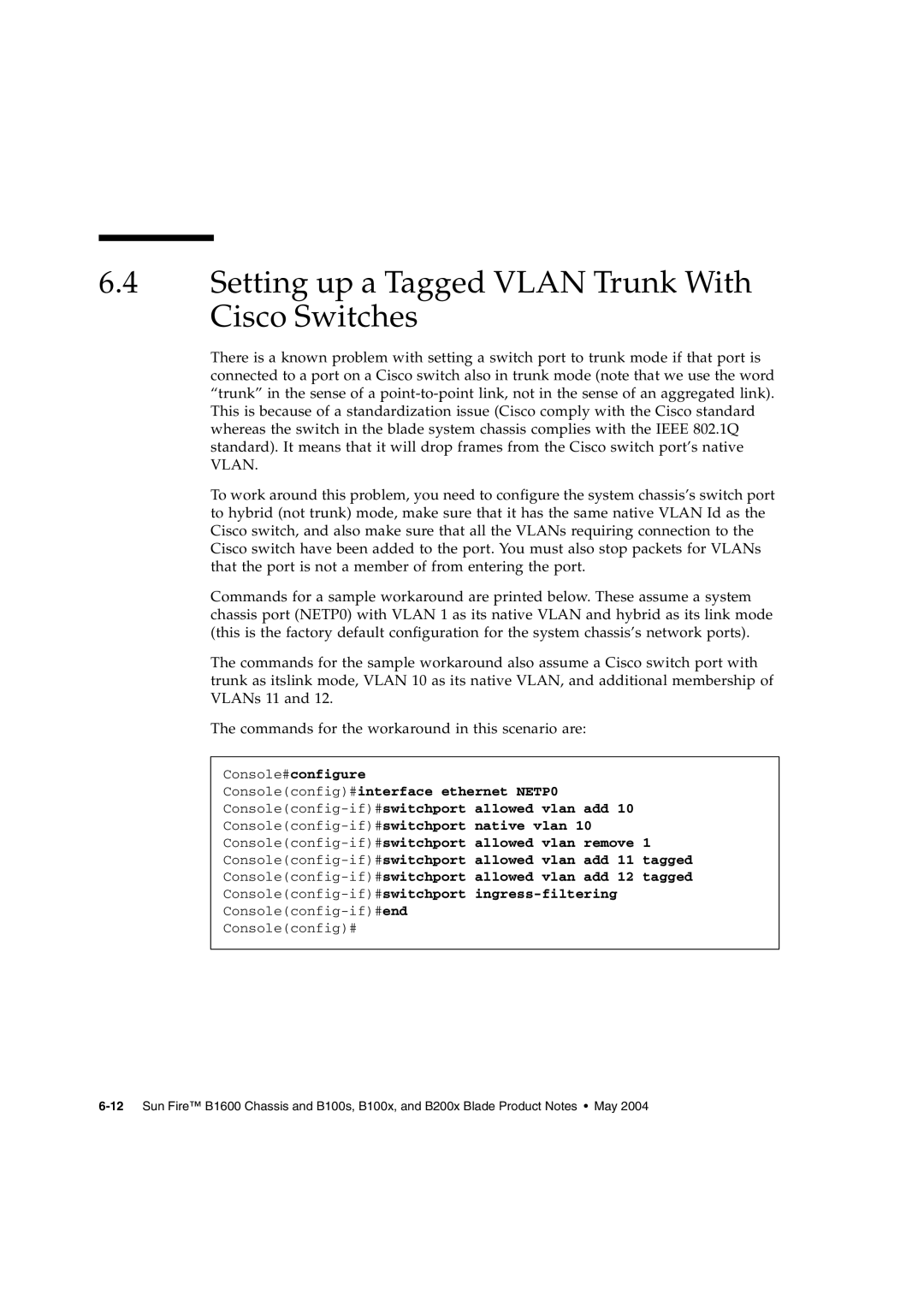
6.4Setting up a Tagged VLAN Trunk With Cisco Switches
There is a known problem with setting a switch port to trunk mode if that port is connected to a port on a Cisco switch also in trunk mode (note that we use the word “trunk” in the sense of a
To work around this problem, you need to configure the system chassis’s switch port to hybrid (not trunk) mode, make sure that it has the same native VLAN Id as the Cisco switch, and also make sure that all the VLANs requiring connection to the Cisco switch have been added to the port. You must also stop packets for VLANs that the port is not a member of from entering the port.
Commands for a sample workaround are printed below. These assume a system chassis port (NETP0) with VLAN 1 as its native VLAN and hybrid as its link mode (this is the factory default configuration for the system chassis’s network ports).
The commands for the sample workaround also assume a Cisco switch port with trunk as itslink mode, VLAN 10 as its native VLAN, and additional membership of VLANs 11 and 12.
The commands for the workaround in this scenario are:
Console#configure
Console(config)#interface ethernet NETP0
Console(config)#
